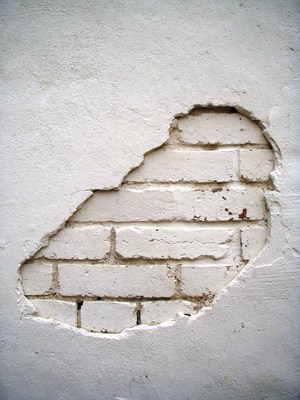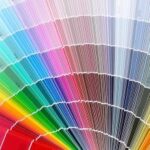Many people think that whitewashing walls is the same as painting them. Actually whitewash doesn’t use paint at all. Whitewash is application of a thin plaster of lime on the wall. The purpose of whitewashing and painting are the same, which is coloring. The whitewashing mixture is made by mixing lime (calcium hydroxide), water, salt and a color stain together. Mostly whitewash is purely white and it is usually applied on exterior walls and fences. As it has sanitary properties it is also good for cellar walls, stable or cowshed interiors and on outbuildings. It is applied with a paintbrush but the method of application is different. For carrying out a whitewashing job you will need plastic buckets for mixing the whitewash, a waterproof concrete sealant, a wide stain or paint brush, lime and salt. The quantities required will depend on the area to be covered. The salesman at the store will be able to advise you on this account.
Here are the tips for whitewashing walls. Follow the steps properly for a job well done.
1. Mix about 5 lbs. of hydrated lime in about 2 gallons of water to form a cream like paste and keep it like that overnight. This will result in the formation of what is known as slaked lime, which is applied on the walls as a thin plaster.
2. After the paste has remained overnight make a solution of about 5 lbs of salt (sodium chloride or common salt) in 2 gallons of water. Drain out the excess water from the lime mixture and then add the salt solution and mix to get a consistency like that of pancake batter. This is achieved by mixing both lime paste and salt water slowly. Be sure not to add extra lime but you can add extra water if necessary.
3. You can test for the proper thickness of the resulting mixture by applying a little on a piece of paper and drying it quickly. After drying if it looks granular and coarse then make it thinner. Special pigments that can be used with lime are available in stores. If you want a color other than white then you can add the pigment at this stage and mix thoroughly. Whitewash is not always white!
4. Before starting the whitewashing it is necessary to clean the surface to be whitewashed thoroughly. Wash off the old whitewash to remove loose material and dust. Remove or cover up any stains as they will be visible through the coating, as the whitewash won’t cover them. Scrub if necessary. Dry the floor and then cover it to avoid stains.
5. Before starting wet the surface with water if it is not already wet and then apply the whitewash with a wide flat paintbrush. Don’t rub it on like you do while painting. Brush the surface lightly by using the ends of the bristle. The bristles should not bend fully and the brush should be held lightly and used with freedom and flexibility, with an arm motion that is free flowing. As the whitewash paste is thicker than usual paint it will not easily go on, hence it is applied with the tip of the brush.
After you have finished whitewashing you may find that the surface looks blotchy but if you leave it to dry for one day you will have a bright looking white (or colored) surface. As you can see white washing is easy to do yourself and with the above tips for whitewashing walls there should be no problem getting the job well done.




